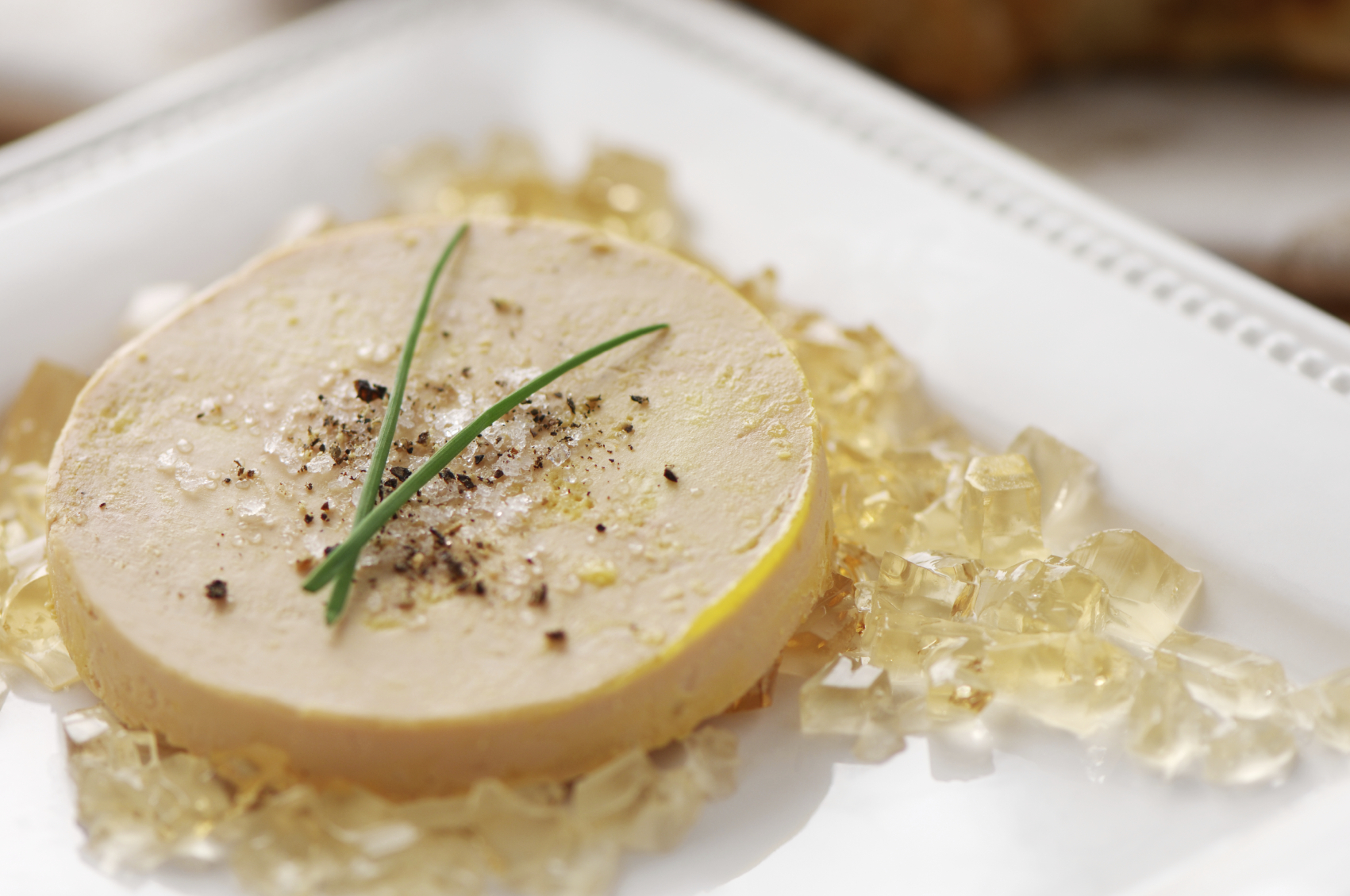By Eileen Lavine
Jews, too, are a part of the foie gras story: The practice spread to Greece and Rome, where legend has it that the Romans used Jewish slaves to feed the geese dried figs, calling the resulting product iecur ficatum, or “fig liver.” As Jews moved northward into western and central Europe during the Middle Ages, they took the tradition with them, carrying it to Alsace, then France, where the dish was named foie gras, or “fat liver.” New methods of feeding were developed, and throughout Europe, Jews sold the fattened goose liver to non-Jews. Joan Nathan, in her book, Quiches, Kugels, and Couscous: My Search for Jewish Cooking in France, says that by the 16th century, “Jews were seen as the best purveyors of foie gras.” A 1571 cookbook by the Pope’s chef praised the liver of a goose “raised by the Jews.”
By this time poultry had become key to European Jewish cooking. Living in lands where olive oil was not always plentiful and forbidden by the rules of kashrut from using lard or using butter with meat, Jews relied on poultry fat—schmaltz in Yiddish. In fact, goose fat was often preferred over chicken or duck fat because its lower melting point resulted in a creamier consistency. Geese were what Mark Caro, in his 2009 book, The Foie Gras Wars: How a 5,000-Year-Old Delicacy Inspired the World’s Fiercest Food Fight, described as “prodigious portable producers” or “walking larders.” In addition to cooking with goose fat and consuming goose liver and giblets, Jews ate roasted goose and stuffed goose neck, made gribenes (cracklings) out of the skin and plucked the feathers to make down comforters.
Foie gras did present complications for Jews. For one, unlike other parts of an animal, the liver cannot be kashered through soaking and salting—instead, it must be broiled or grilled over a flame. In addition, the esophagus of the bird must be inspected after slaughter to ensure it has no holes, scars or blemishes, which would indicate suffering while the animal was alive. More complex, however, were the ethical questions. In the 11th century, the French scholar Rashi warned Jews against the force-feeding practice, “for having made these beasts (geese) suffer while fattening them.” This went against Jewish law prohibiting tza’ar ba’alei chayim, suffering to animals, although some rabbis claimed that since none of the geese’s limbs were harmed and the geese did not feel discomfort in their throats, foie gras was not treyf, or forbidden. Other rabbinic scholars suggested that it is only permissible to inflict pain on an animal when the benefit of doing so is significant; since there are no real nutritional benefits to foie gras, the process of force-feeding was questionable.
This debate has continued to modern times, but foie gras has remained popular. The dish became one of Israel’s first exported products shortly after 1948, when it was introduced to the fledgling Jewish state by Moshe Friedman, a Hungarian Holocaust survivor and third-generation goose farmer, according to Gil Marks in his Encyclopedia of Jewish Food. Friedman convinced the government to fund the production of goose livers on his kibbutz; the product was then sold to an Alsatian pâté manufacturer.
In recent years, the production of foie gras has come under fire. Some European countries have banned forced feeding of animals, as did Israel in 2005, forcing many Israeli producers to move elsewhere. Today, nearly 80 percent of foie gras—often made with less expensive ducks—is now produced in France, primarily in the Dordogne and Alsace regions, with smaller quantities made in Hungary, Belgium, Spain and Bulgaria. It is also produced in the United States, where in 2012, California enacted a ban on the sale of force-fed foie gras.
Today, the largest American producer of foie gras is Hudson Valley Farms in Ferndale, New York, founded in 1990 by Michael Ginor, a Seattle native and Brandeis graduate who spent two years with the Israel Defense Forces, and Izzy Yanay, who once managed Israel’s biggest foie gras farm. Their Moulard ducks, a crossbreed between a Muscovy male and a Pekin female, are bred with cage-free methods and fed by workers inserting corn by hand through a plastic tube two or three times a day for just a few seconds. Ginor responds to attacks by animal-rights activists by maintaining that this method of force-feeding “is more gentle, more caring and most humane. We do minimal damage to the ducks.” But it isn’t cheap: A one-and-a-half pound portion of fresh foie gras costs $89. None of the duck goes to waste—products on sale include duck breast or magret, duck legs to make confit, duck bones for stock and duck innards sold mostly to Asian buyers. To cater to Jewish customers, the company hopes to offer a kosher foie gras in the future.
Foie gras bears a similarity to that staple of European Jewish cuisine: chopped liver. Popular in countries such as Poland, Ukraine and Lithuania, chopped liver arrived in the United States along with immigrants in the late 19th century. Chopped liver, however, is typically made from chicken, beef or calf, and does not come from force-fed animals. Delicious as it may be, it has come to stand for something insignificant, as in “What am I, chopped liver?” Such has not been the fate of foie gras: whether in a terrine or a torchon, the controversial dish remains, for many, the epitome of elegance.


” fed by workers inserting corn by hand through a plastic tube two or three times a day for just a few seconds.” I’m sure all the women who stood up for our right to vote and were force fed, if only for a few minutes, while in prison would appreciate the delicacy of this.
That is a response similar to demanding to break the glass in the aquarium because the fish are drowning. A tube in the esophagus of a person is difficult and unpleasant. It is not for a duck.